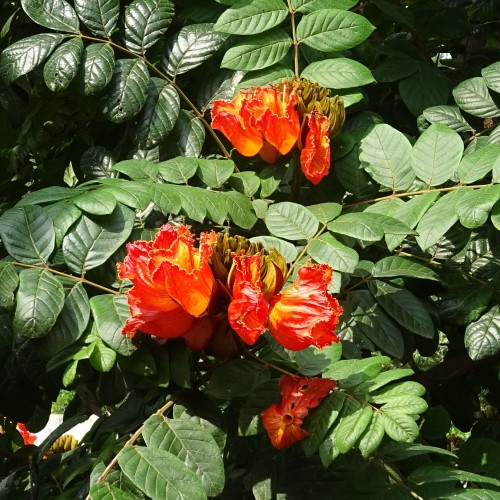Living Here
Invasive plant species to be removed across the Gladstone Region

Gladstone Regional Council’s biosecurity team has identified more than 100 African tulip trees requiring removal on Council land throughout the region.
The African tulip tree (Spathodea campanulata) is a category 3 restricted invasive plant under the Biosecurity Act 2014 and listed as a ‘containment’ species under the GRC Biosecurity Plan 2021-25.
Under the Biosecurity Act 2014, Council is responsible for ensuring that invasive biosecurity matter within the local government’s area are managed in compliance with the Act.
However, the decision to remove these trees was prompted by community feedback, as community engagement conducted in September 2020 for the development of Council’s new biosecurity plan identified that African tulip trees were of a concern for residents.
Additionally, in 2021 Council has received more than 30 customer service requests to date in relation to the trees.
Gladstone Region Mayor Matt Burnett said African tulip trees are a serious environmental weed in coastal Queensland, where they are highly invasive and form dense stands in gullies and along streams, crowding out native vegetation.
“The African tulip tree is native to tropical Africa and has been popular as an ornamental garden tree or street tree in tropical and subtropical parts of Queensland due to its showy, red tulip-shaped flowers,” Councillor Burnett said.
“In recent years, it has been discovered that the nectar and pollen of these trees contain toxins that are extremely harmful to insects, particularly native stingless bees.
“Unfortunately, while these trees are aesthetically pleasing, they have been identified as a concern and action will be taken as a result.
“It’s also worth noting that other Local Government Areas in Queensland, such as the Fraser Coast Regional Council, have also been removing African tulip trees from their landscape in recent months.”
Cr Burnett said the removal program will target 127 trees and be rolled out across six zones with the region, beginning from Zone 1 (Agnes Water, Benaraby, Bororen, Miriam Vale and Turkey Beach) from Monday 29 November.
“Work will be undertaken by a professional tree services company and will include the cutting, mulching and removal of the trees,” he said.
“A mulching vehicle will be parked in roadside parking areas while this work occurs, however it is important to note that Council is mindful of residents’ access to homes, businesses and other community facilities, with this work likely to cause only minimal disruption.
“Public safety will also be taken into consideration with some of the work taking place in public areas such as footpaths, easements, near house fences, next to driveways or near street corners, with traffic management in place where applicable.
“Naturally, some noise will be generated during the removal process, but work will only occur during normal business hours from Monday to Friday.” Locations for tree removal are:
- Zone 1 – Agnes Water, Bororen, Turkey Beach, Miriam Vale, Benaraby
- Zone 2 – Boyne Island, Tannum Sands
- Zone 3 – Barney Point, Sun Valley, Telina, Toolooa, Kin Kora
- Zone 4 – New Auckland
- Zone 5 - Gladstone Central, South Gladstone, West Gladstone
- Zone 6 – Callemondah, Clinton.
Please visit www.gladstone.qld.gov.au/biosecurity for more information on Council’s various biosecurity measures and https://www.daf.qld.gov.au/__data/assets/pdf_file/0007/52846/african-tulip-tree.pdf for further information about the African tulip tree.
See Also








